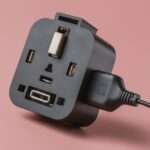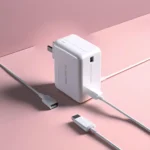If you have ever found yourself in the frustrating predicament of your laptop not charging, you’re not alone. This common issue can be caused by a variety of factors, ranging from simple fixes to more complex technical problems. In this article, we’ll explore the common reasons why your laptop may not be charging and provide practical solutions to help you get back up and running.

Common Reasons
Battery Issues
One of the most common reasons for a laptop not charging is a faulty battery. Over time, batteries can degrade, resulting in decreased charging capacity or failure to hold a charge altogether. If your laptop is older or has been heavily used, it’s possible that the battery may need to be replaced.
Faulty Charger or Cable
Another common culprit is a faulty charger or charging cable. Damage to the charger or cable, such as fraying or exposed wires, can prevent proper charging. Additionally, using a charger or cable that is not compatible with your laptop can also cause charging issues.
Damaged Power Jack
The power jack, also known as the charging port, is where you plug in the charger to charge your laptop. If this port becomes damaged or loose, it can prevent the charger from making a secure connection, resulting in charging problems. Physical damage or wear and tear over time can contribute to this issue.
Software Issues
Sometimes, software issues can interfere with the charging process. Outdated or corrupt system files, as well as driver issues, can prevent your laptop from recognizing the charger or properly managing power flow. Updating your operating system and drivers can often resolve these issues.
Troubleshooting Steps
If your laptop is not charging, there are several troubleshooting steps you can take to identify and resolve the problem.
Checking the Power Source

First, ensure that the power source, such as the wall outlet or power strip, is working properly. Try plugging in another device to confirm that there is power available.
Inspecting the Charger and Cable
Inspect the charger and charging cable for any signs of damage, such as fraying, exposed wires, or bent connectors. If you notice any issues, try using a different charger or cable to see if that resolves the problem.
Cleaning the Charging Port
Dust, debris, and lint can accumulate in the charging port over time, obstructing the connection between the charger and the laptop. Use a can of compressed air or a small brush to carefully clean out the port.
Updating Software and Drivers
Check for updates to your operating system and drivers, especially those related to power management. Installing the latest updates can often fix software-related charging issues.
Checking Battery Health
Many laptops come with built-in diagnostic tools that can assess the health of your battery. Run a battery health check to determine if the battery needs to be replaced.
DIY Fixes
If you’re comfortable with DIY repairs, there are several steps you can take to try and fix the charging issue yourself.
Resetting the Battery
Some laptops have a reset button or pinhole that allows you to reset the battery. Refer to your laptop’s manual or manufacturer’s website for instructions on how to perform a battery reset.
Using a Different Charger or Cable

If you suspect that the charger or cable is the problem, try using a different one to see if that resolves the issue. Borrow a charger from a friend or family member, or purchase a replacement if necessary.
Repairing or Replacing the Power Jack
If the charging port is damaged or loose, you may need to repair or replace it. This can be a more complex repair, so if you’re not comfortable doing it yourself, seek assistance from a professional technician.
Professional Help
If you’ve tried troubleshooting the issue yourself and are still unable to resolve it, it may be time to seek professional help.
Seeking Assistance from a Technician
A qualified technician can diagnose and repair more complex charging issues, such as hardware damage or motherboard issues. Look for a reputable repair shop or contact the manufacturer for warranty service.
Warranty and Repair Options
If your laptop is still under warranty, check to see if the charging issue is covered. Many manufacturers offer warranty repairs for hardware issues, including charging problems. If your laptop is out of warranty, consider contacting the manufacturer or a third-party repair service for repair options.
FAQs
- How do I know if my laptop battery needs to be replaced?
- Look for signs such as decreased battery life, sudden shutdowns, or the inability to hold a charge. You can also run a battery health check to assess its condition.
- Why is my laptop charger getting hot?
- A hot charger could indicate a problem with the charger itself or with the charging circuit in your laptop. Stop using the charger immediately and seek professional assistance to avoid potential safety hazards.
- Can I use a different charger with my laptop?
- In most cases, it’s safe to use a charger with the same voltage and wattage output as your original charger. However, using a charger with a different output could damage your laptop or battery, so it’s best to stick with the manufacturer’s recommended charger.
- How long should a laptop battery last before needing replacement?
- The lifespan of a laptop battery can vary depending on usage and environmental factors. On average, a laptop battery may last anywhere from 1 to 5 years before needing replacement.
- Is it worth repairing an old laptop with charging issues?
- It depends on the severity of the issue and the cost of repairs compared to the value of the laptop. In some cases, it may be more cost-effective to invest in a new laptop rather than repairing an older one.
Conclusion
Dealing with a laptop that won’t charge can be frustrating, but by understanding the common reasons behind this issue and following the troubleshooting steps outlined in this article, you can often resolve the problem and get back to using your device normally.

